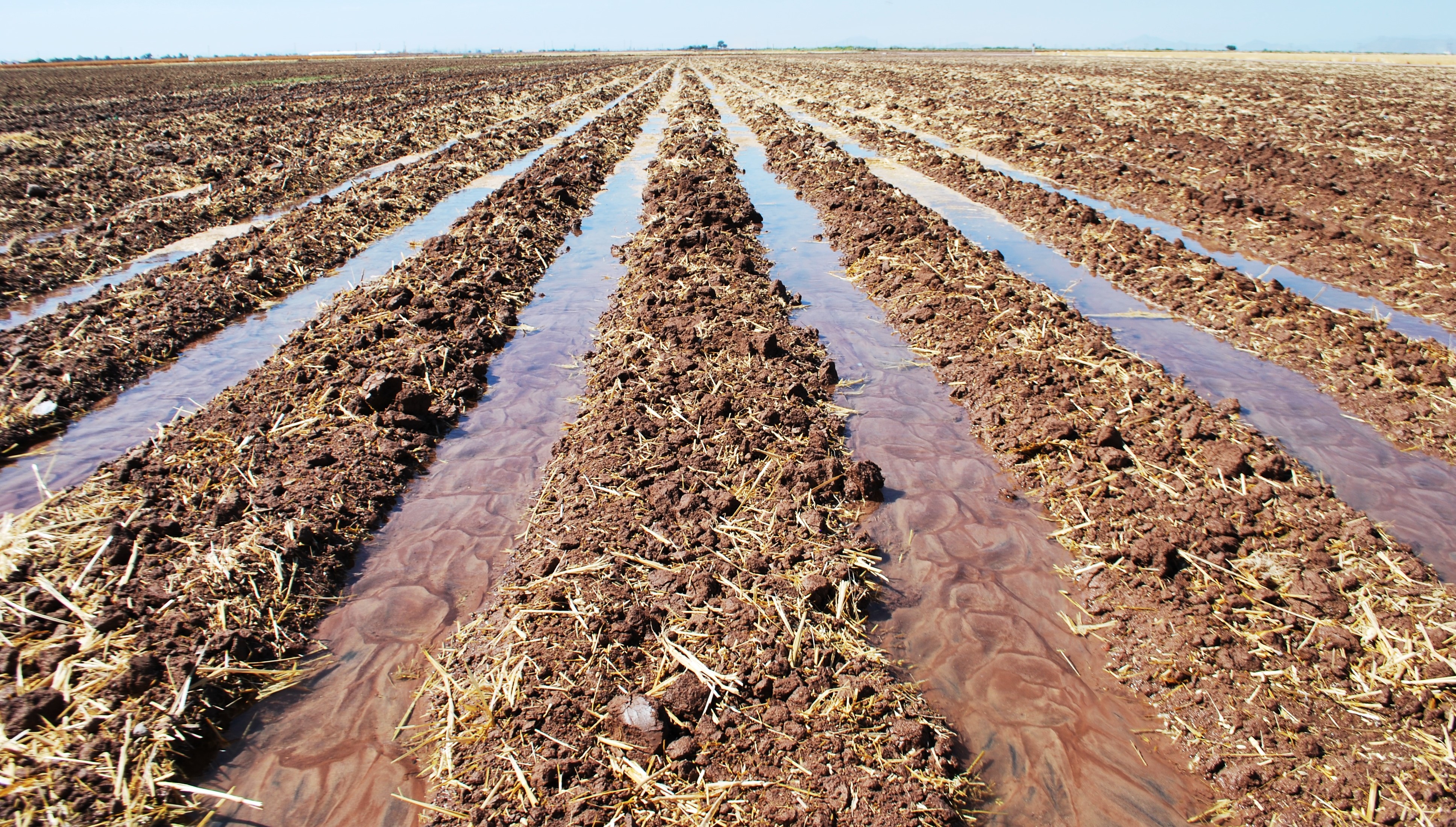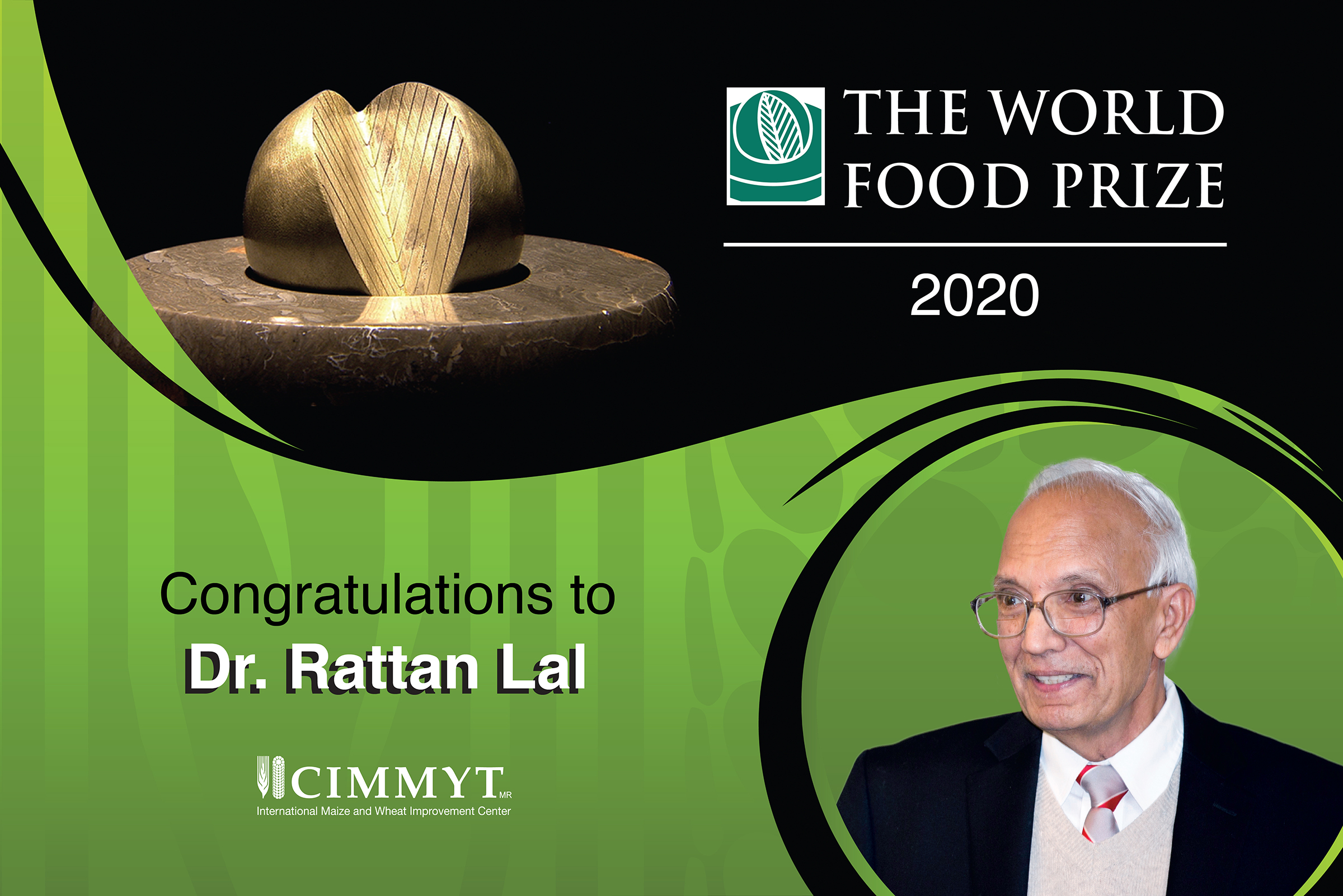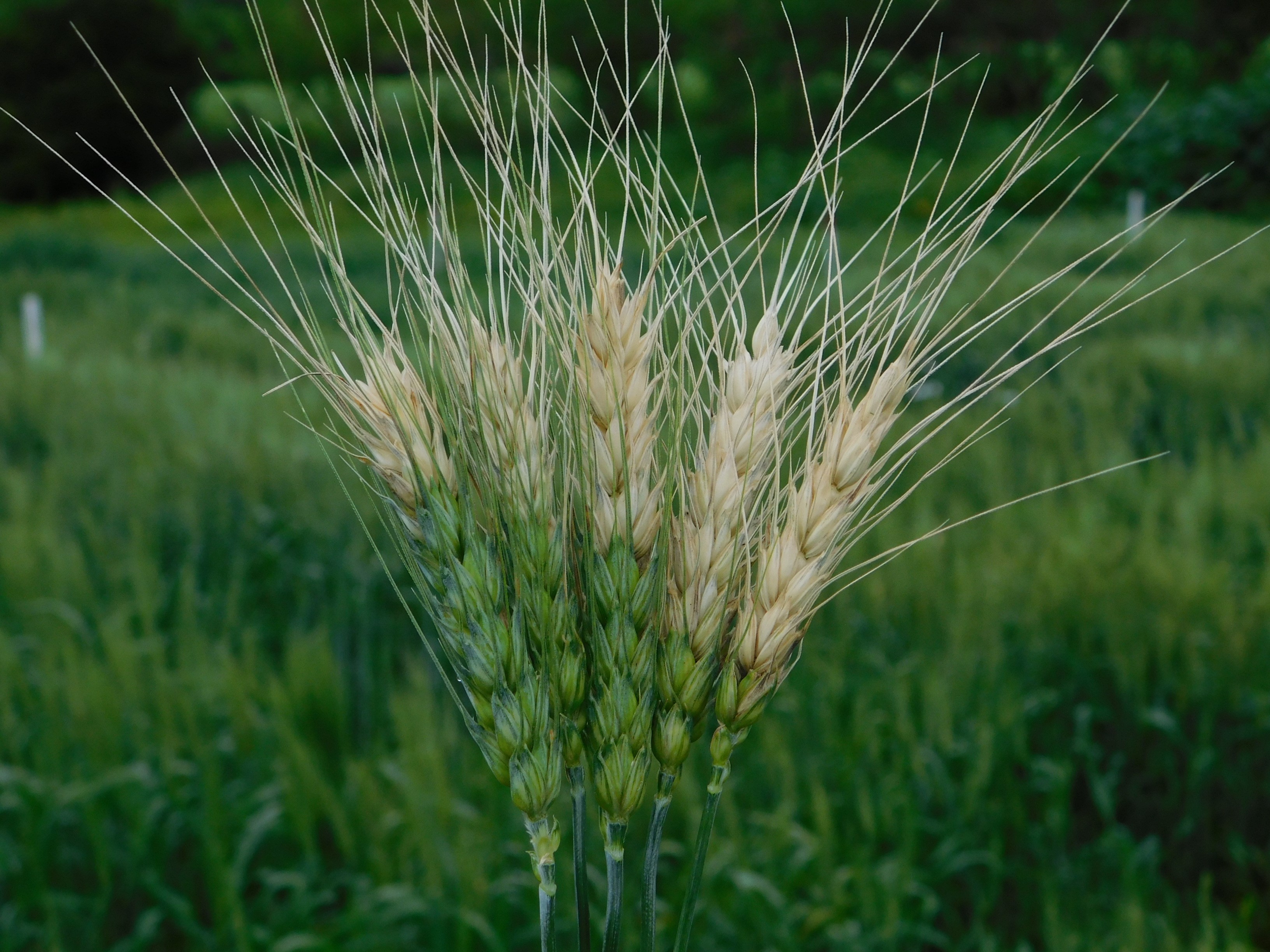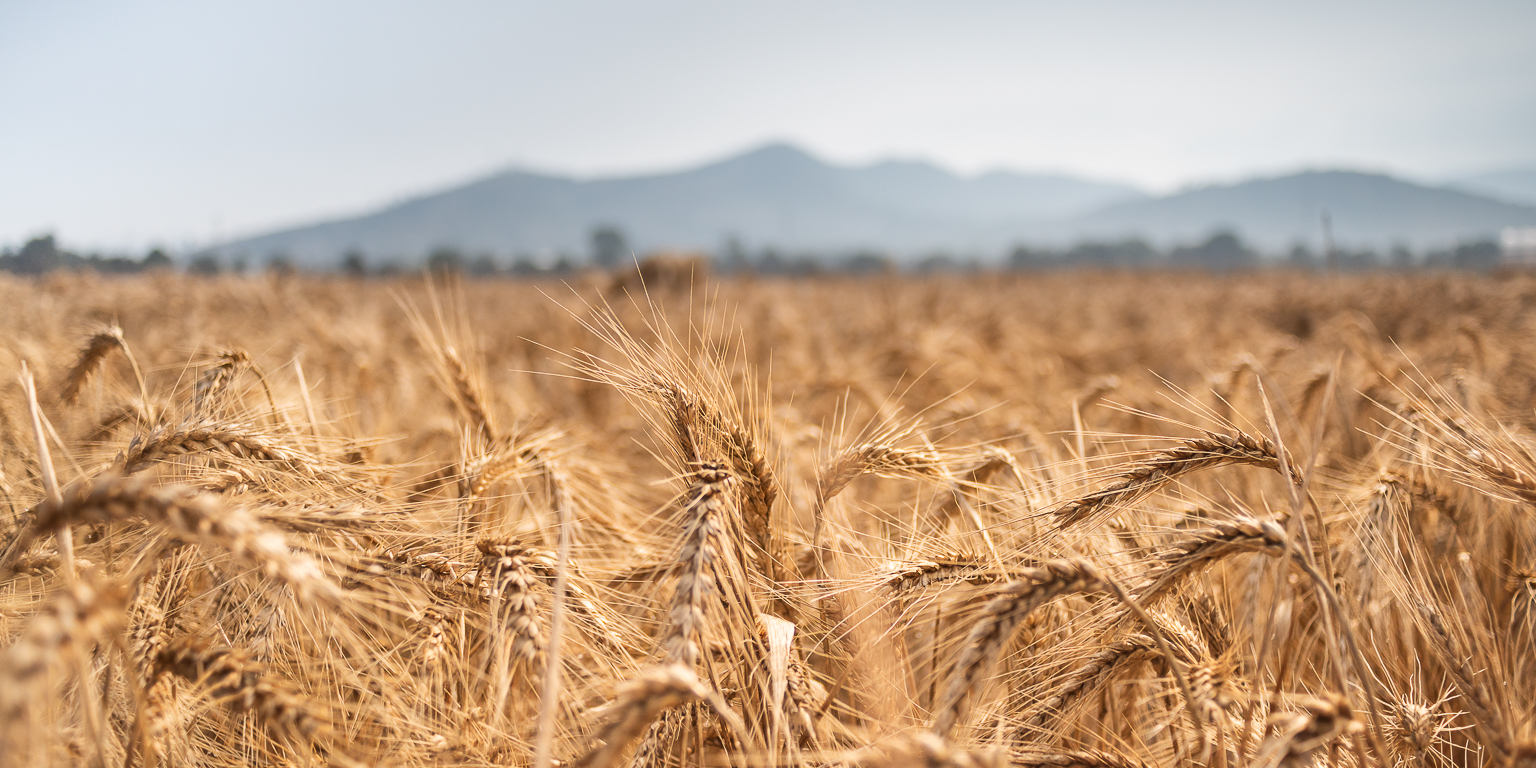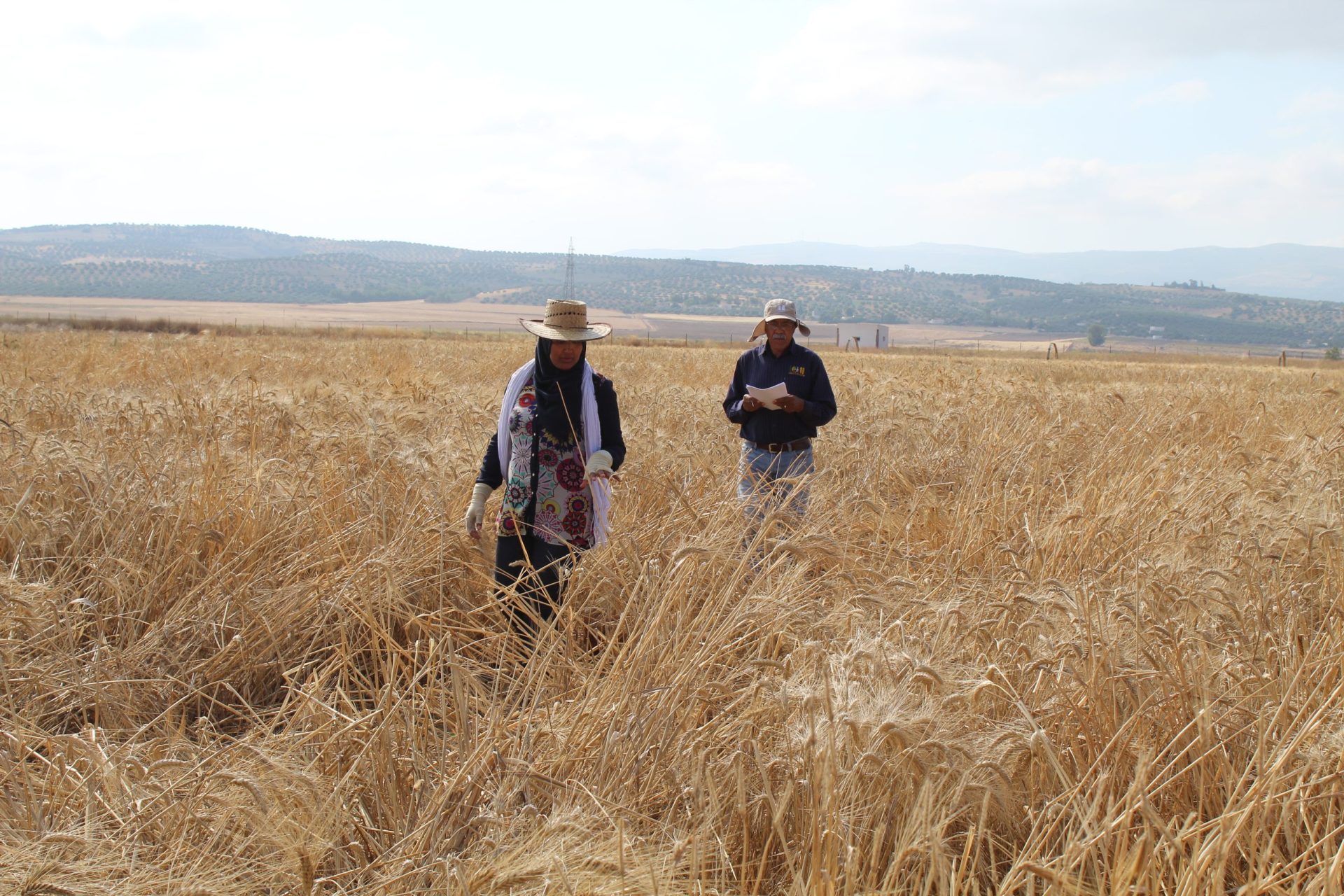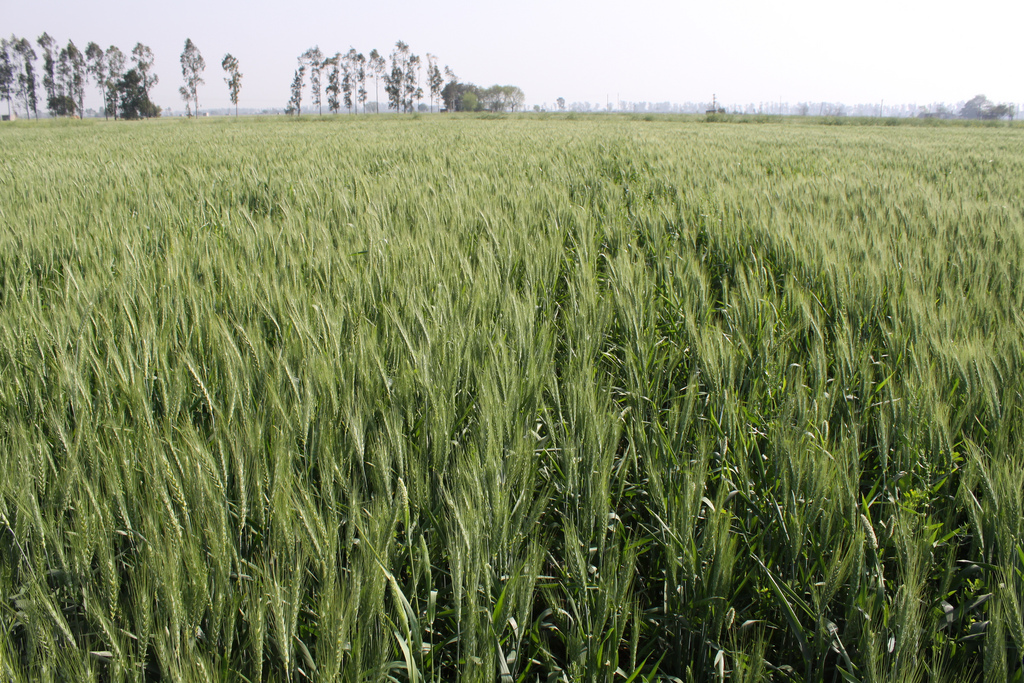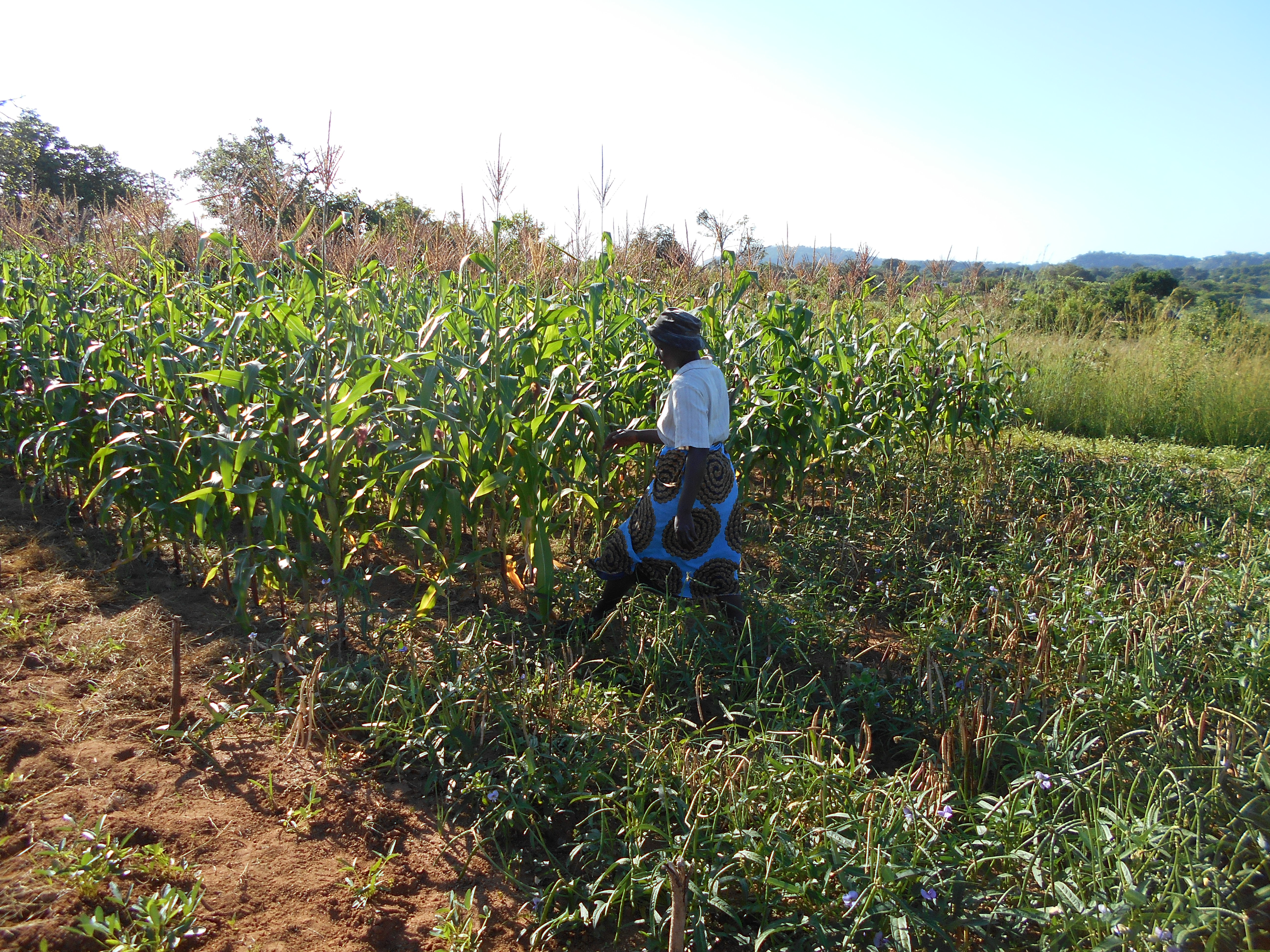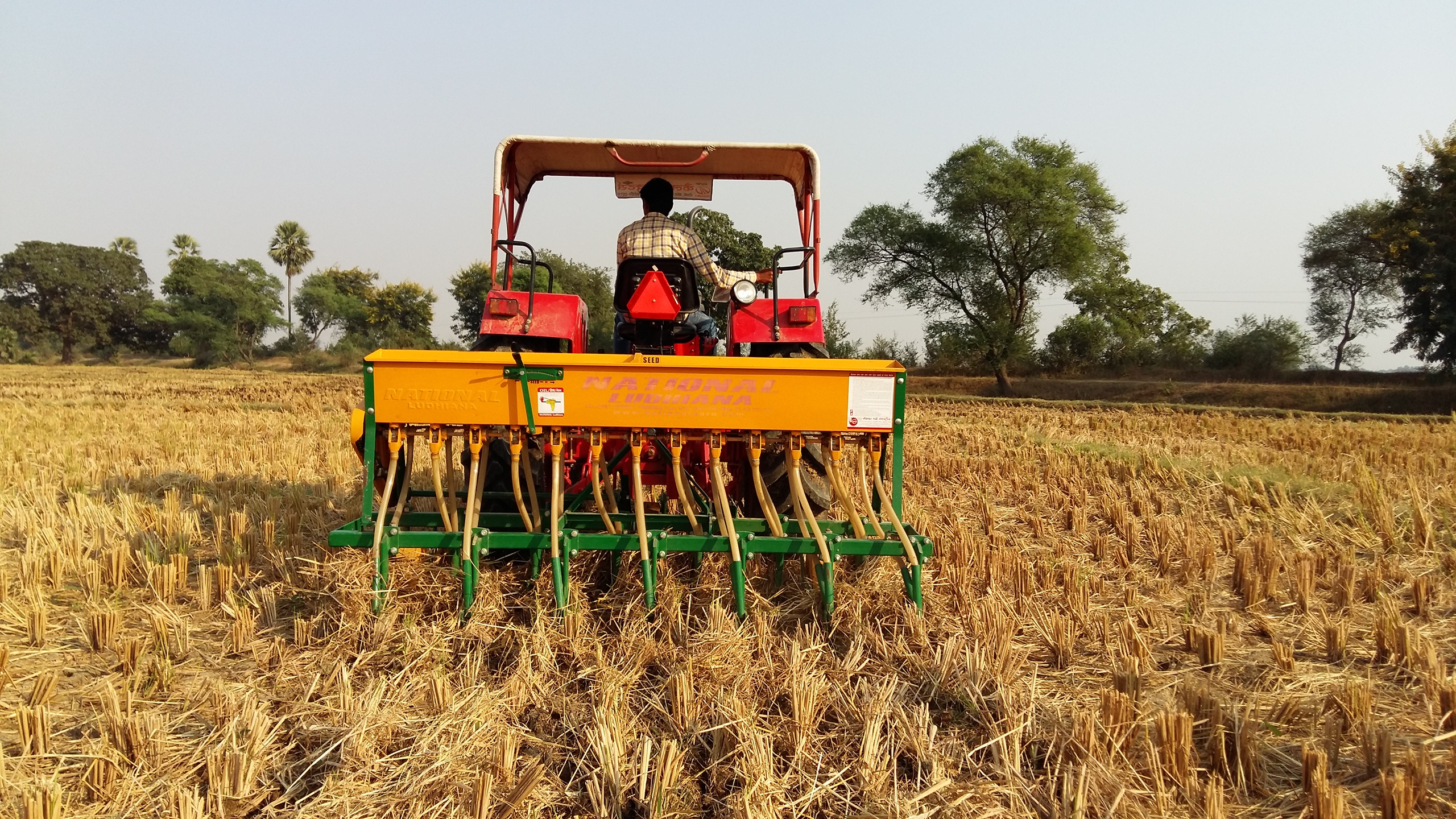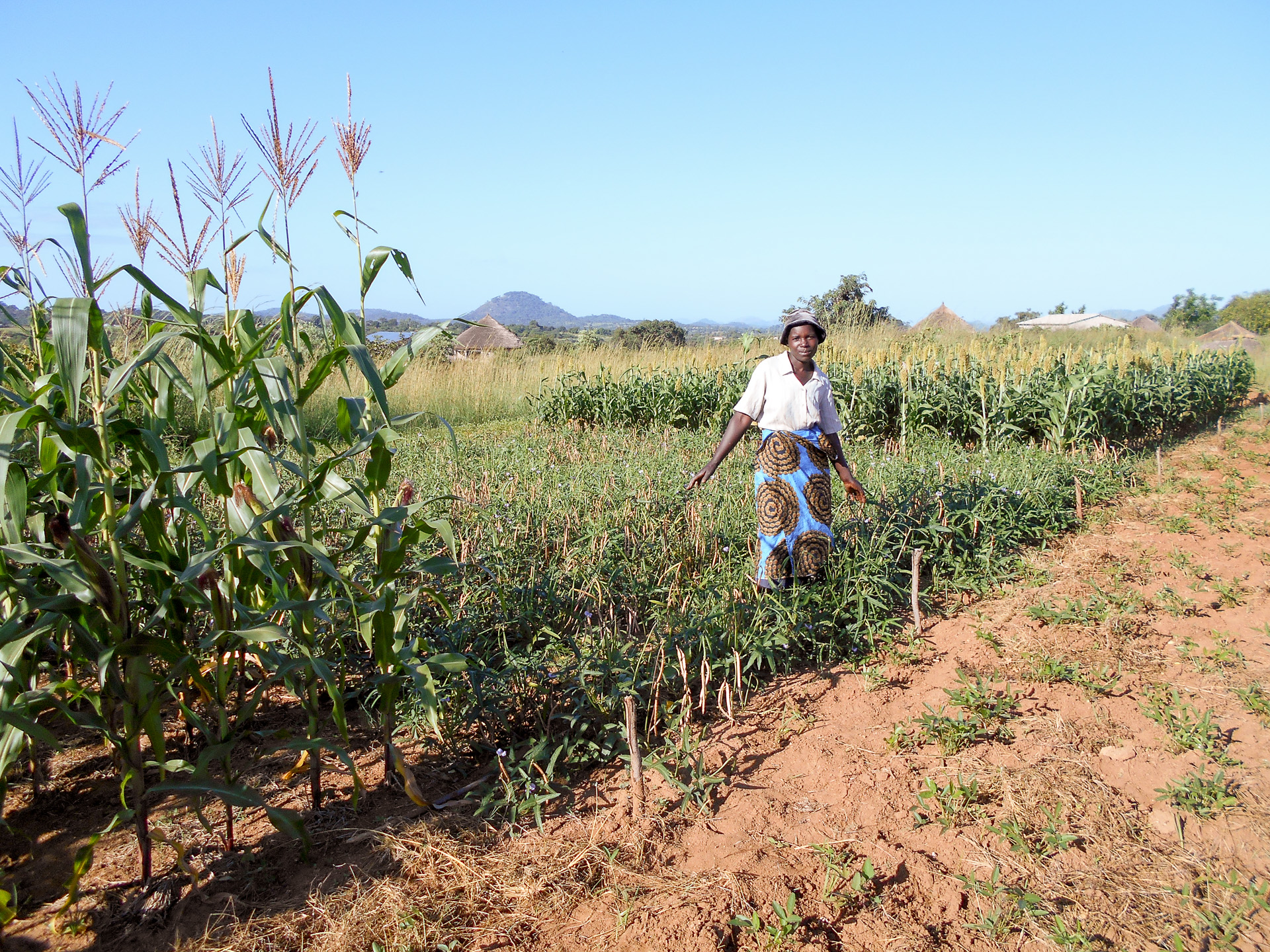Environmental health and biodiversity
The world needs better management of water, soil, nutrients, and biodiversity in crop, livestock, and fisheries systems, coupled with higher-order landscape considerations as well as circular economy and agroecological approaches.
CIMMYT and CGIAR use modern digital tools to bring together state-of-the-art Earth system observation and big data analysis to inform co-design of global solutions and national policies.
Our maize and wheat genebanks preserve the legacy of biodiversity, while breeders and researchers look at ways to reduce the environmental footprint of agriculture.
Ultimately, our work helps stay within planetary boundaries and limit water use, nutrient use, pollution, undesirable land use change, and biodiversity loss.
What is sustainable intensification?
 Climate adaptation and mitigation
Climate adaptation and mitigation
Farming method can boost yields, increase farmers’ profits and reduce greenhouse gas emissions.
2020 World Food Prize recognizes career devoted to fight hunger and climate change through soil conservation
 Climate adaptation and mitigation
Climate adaptation and mitigation
Rattan Lal receives agriculture’s highest distinction for developing sustainable farming practices that conserve soils and contribute to climate change mitigation.
Wheat blast has made the intercontinental jump to Africa
 Environmental health and biodiversity
Environmental health and biodiversity
Source: Rural 21 (9 Oct 2020)
Wheat blast poses a serious threat to rain-fed wheat production in Zambia and raises the alarm for surrounding regions and countries on the African continent with similar environmental conditions.
Scientists find genomic regions associated with wheat blast resistance in CIMMYT nurseries
 Environmental health and biodiversity
Environmental health and biodiversity
Genomic-wide association study evaluated samples from Bolivia and Bangladesh for blast-resistant genes.
Starting with Seeds
 Climate adaptation and mitigation
Climate adaptation and mitigation
CIMMYT and partners in sub-Saharan Africa work with seed companies to invest in deployment of climate-resilient and nutritionally enriched maize seed.
Efforts in controlling maize disease boosting steady supply of certified seeds
 Environmental health and biodiversity
Environmental health and biodiversity
Source: Kenya Broadcasting Company (5 Oct 2020)
CIMMYT and partners are supporting the commercial seed sector to produce seed free from the maize cause of maize lethal necrosis.
‘Seeds for Needs’ approach to develop climate resilient crop varieties
 Climate adaptation and mitigation
Climate adaptation and mitigation
Source: India Science Wire (22 Sep 2020)
Approach combines farmers’ knowledge of resilient crops with ‘elite’ varieties identified by scientists.
Massive-scale genomic study reveals wheat diversity for crop improvement
 Environmental health and biodiversity
Environmental health and biodiversity
A team of scientists has completed one of the largest genetic analyses ever done of any agricultural crop to find desirable traits in wheat’s extensive and unexplored diversity.
Building resistance in wheat: International collaboration fights Septoria tritici blotch disease
 Capacity development
Capacity development
Tunisia-based Septoria phenotyping platform plays critical role in identifying sources of resistance to the disease.
Wheat researchers to gather for October virtual event
 Environmental health and biodiversity
Environmental health and biodiversity
Source: World Grain (27 Aug 2020)
Experts from around the world will meet to discuss the most pressing challenges facing global wheat security.
Agency unveils seed resistant to disease
 Environmental health and biodiversity
Environmental health and biodiversity
Source: The Standard (16 Aug 2020)
Kenya Seed Company worked with CIMMYT to develop a maize lethal necrosis-tolerant hybrid.
Conservation agriculture for sustainable intensification in Eastern India
 Environmental health and biodiversity
Environmental health and biodiversity
A new policy brief provides a roadmap for accelerating the adoption of conservation agriculture in Eastern India.
When mothers learn from babies
 Climate adaptation and mitigation
Climate adaptation and mitigation
The “learning by doing” concept helps farmers in Zimbabwe successfully adopt sustainable agriculture principles.
Could coronavirus drive farmers to adopt sustainable practices in India’s breadbasket?
 Climate adaptation and mitigation
Climate adaptation and mitigation
Interest in farm machinery and crop diversification spike as farmers respond to COVID-19 labor shortages.
Conservation agriculture feeds people and protects the environment
 Climate adaptation and mitigation
Climate adaptation and mitigation
Initiative in Zimbabwe pursues holistic and multi-faceted approach to support climate resilience and increase yields.
